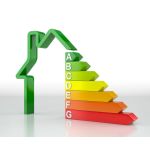Net billing
Household consumers have the possibility to install photovoltaic stations with an installed capacity of up to 10.8kW with the application of net billing or virtual net billing .
In net-billing, the offset between produced and consumed energy is done in real time. Any excess energy is injected into the grid and compensated for twenty years based on the wholesale market price at the time of injection.
It is possible to install a modern battery together with the photovoltaic (not from the classic lead batteries , but lithium- ion batteries , similar to that of electric cars), so the self-consumption in real time increases and, thus, there is less exchange of energy with the network. In addition, the battery can also be used as a UPS to cover basic needs in the event of a power outage.
Every electricity bill, regardless of provider , has two distinct parts (and one for municipal fees and ERT, but these are not related to electricity). The first part ("competitive charges") concerns the cost of energy, i.e. of each kilowatt-hour and differs from provider to provider. The second part concerns the so-called "regulated charges" (eg network usage fees, public utility services -YKO-, ETMEAR, etc.) and is the same for all providers. With net-billing, you earn 100% of competitive charges for every kilowatt-hour you produce with your PV and self-consume on-site at the time. You also earn a percentage of the regulated charges which depends on how well the production from the photovoltaic coincides with your consumption (the so-called “simultaneity rate”).
Example: Let's say your PV produces 100 kilowatt-hours, of which you consume 30 on-site in real time ("simultaneity rate" 30%) and send 70 to the grid (respectively drawing 70 kilowatt-hours from the grid when you need them). In this example, you earn 30% of competitive rates for those 100 kilowatt hours and 30% of regulated rates. For the remaining 70 kilowatt hours you are compensated at the wholesale price during the injection hours. If you now put in a battery (e.g. increasing the “synchronization rate” from 30% to 60%) and the energy you sent to the grid was 40 kilowatt hours, you earn 60% of the competitive rates for that 100 kilowatt hours and 60 % of regulated. For the remaining 40 kilowatt hours you are compensated at the wholesale price during the injection hours.
Also, if you do not participate in a subsidy scheme, you can benefit from tax credits ( tax credits do not apply if you are already subsidized by a scheme). According to Law 5073/2023, Official Gazette 204A/11.12.2023, the costs incurred for the purchase of goods and the receipt of services related to the energy, functional and aesthetic upgrading of buildings, which have not already been included or will not be included in a building upgrade program, reduce, equally distributed over a period of five (5) years, the income tax of natural persons, up to the corresponding tax for each tax year, with a maximum total expenditure limit of sixteen thousand (16,000) euros. The amount of expenses for the purchase of goods taken into account for tax reduction does not exceed one third (1/3) of the amount of expenses for receiving services taken into account for tax reduction.
The measure covers self-consumption photovoltaic systems with or without storage.
Helapco's Guide to self-consumption of energy
Source: www.helapco.gr











